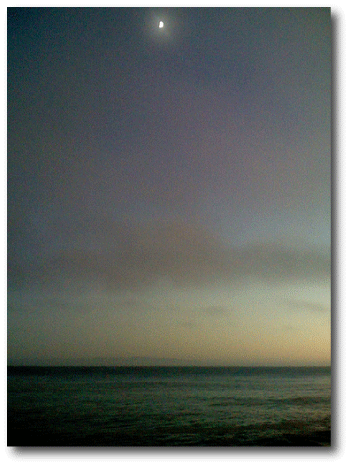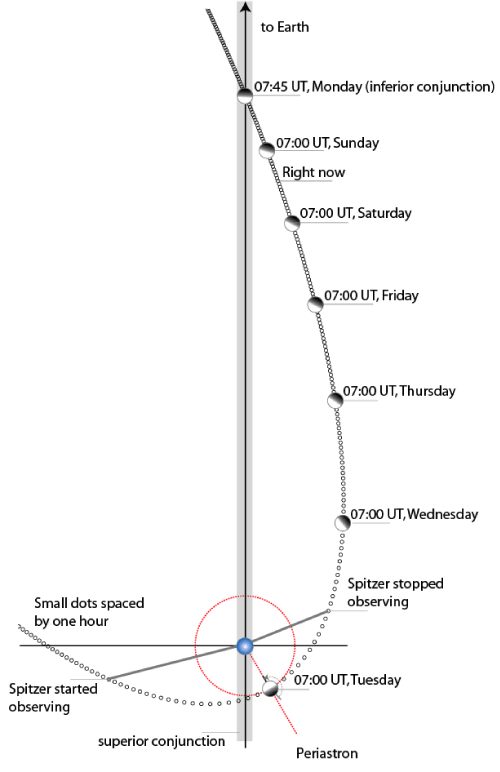
Image Source.
It’s sometimes a little weird to realize that my daily schedule is dictated by the orbits of alien planets. HD 80606b went through periastron passage at 07:00 UT last Tuesday, with the Spitzer Space Telescope’s rattlesnake’s eye vision trained intently upon it. Over the past few days, it’s been hurtling away from the star, gradually reducing its velocity as it climbs up the gravitational potential well of the star.

At 07:45 UT on Monday morning, HD 80606b is scheduled to go through inferior conjunction. In the 1.6% a-priori geometric chance that the orbital plane of the planet is in near-perfect alignment with the line of sight to the solar system, then it will be possible to observe the planet in transit. The 1.6% transit probability is fairly high for a planet with a period of 111 days, but much lower than the 15% probability that a secondary eclipse can be observed. If the planet is undergoing secondary eclipse, then we’ll know as soon as the Spitzer data comes in.
Back in early 2005, Transitsearch.org coordinated a campaign to check for transits of HD 80606b. At that time, there were fewer radial velocities available, and so the transit window was less well constrained. A number of observers got data, and there was no sign of transit, but the coverage was not good enough to rule out a transit. I’m thus encouraging observers to monitor HD 80606 during the next 48 hours on the off chance that it can be observed in transit. Given the small chance involved, it seems appropriate to refer to the transit probability in terms of basis points. As in, “In ’05, we got about 40 basis points. That means there’s still 120 basis points out there to collect.”
HD 80606 is a visual binary. The companion, HD 80607, provides a good comparison star in telescopes with a large enough aperture under good seeing conditions. For most observers, however, the light from the two stars is combined. A transit by HD 80606b is expected to have a depth of order 1.4%, and (if it’s a central transit) will last about 16 hours. It’s a long-shot for sure, but worthwhile and fun nonetheless.

Can’t wait to see the results!
By the way: when should we expect “Showing Mercury the Door, part 2”?
Mercury will be shown the door on Jan. 15th, 2008.
Stay tuned…
:^) I’m watching Greg talk about 80606b on the History channel right now. Awesome.
Twas an excellent program.
The steam engine analogy was apt, though would that mean a water cycle on ‘606b.
Also any idea what the structure of the shock wave might be, is it a heated vapor that overwhelms the planet or is it part of the 6000 mile per hour wind.
The heat vortex imagery was frightening, a 1400k hurricane? consuming a gas giant.
Wish there had been more examination of the life question.
You took the words right out of my mouth TheoA. I particularly enjoyed seeing Greg riding in the choo-choo train.lol
But, a global shock wave on 606b that induces a vortex that engulfs an entire hemisphere? That’s unimaginable.
It was an excellent program.
Well as I don’t have the History channel I missed out :-(